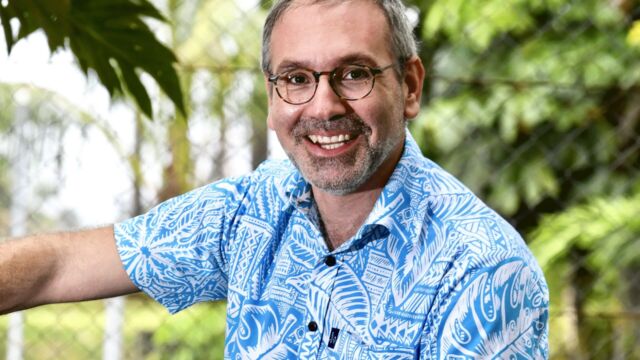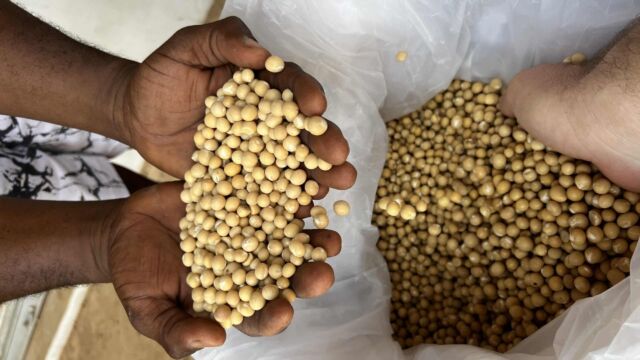
An interview with Dr Michel Ghanem on neglected crops
In a world where a handful of crops dominate the agricultural landscape, there is an untapped treasure trove of underutilised crops that hold huge potential as foods of the future. We had the privilege of sitting down with Dr Michel Ghanem, co-founder of the Forgotten Crops Society, to hear where he thinks society is falling short on investment, research and attention in forgotten crops.
Michel, tell us about your involvement in the Forgotten Crops Society and what its mission is?
The Forgotten Crops Society (FCS) is facilitating a network of key players in the food chain to bring forgotten and under-researched crops to the attention of markets and to consumers’ tables. Our role is at both scientific and networking levels.
Our primary objective is to raise global awareness about the significance of forgotten crops in terms of food and nutrition, as well as their impact on food security and climate change. To achieve this, we engage in extensive research projects, publish papers in reputable journals such as Nature, conduct seminars, and establish working groups. Currently, we are involved in co-editing a special issue on Forgotten Crops for the esteemed scientific journal, Plants People Planet.
Why is there a need for organisations like the Forgotten Crops Society? Do you think researchers today are spending enough time exploring the right crops that will support future food systems?
Agricultural researchers are not spending enough time on alternative crops outside of the mainstream ‘big four’, especially indigenous crops that are adapted to specific environments and have nutritional and cultural significance for local communities. However, researchers are largely dependent on funding sources that prefer to address the immediate symptoms of the acute crises while leaving untouched the deeper causes of the malady.
While there is agreement that climate change and malnutrition present a double challenge to the global food system, there is less agreement about how crop-related R&D efforts should respond to these challenges. Research published in 2018 found that investments (both in terms of human resources and funding) are mostly associated with the current energy output of crops, which means that we are overlooking many crops that may help address climate change challenges and future food systems.
Historically, where do you think a lack of research and interest in these crops stems from?
The lack of research and interest in forgotten crops is a complex issue that has historical, systemic, and economic roots (market-driven agricultural policies). The global agricultural research agencies (CGIAR and others) have identified few crops to concentrate research efforts on and therefore favoured crops that are widely adapted and those that are easier to transport.
This has led to a decline in the diversity of crops grown and consumed globally. Our diets have become increasingly similar over the last 50 years, and this shift was driven in part by the consolidation of the agricultural industry, which favoured large-scale farming that relies on synthetic inputs. As a result, many traditional and indigenous crops have been forgotten.
There is also the problem of market demand – some of these crops have lower market value due to their unique characteristics and limited demand, making them less attractive for private companies to invest in.
Last but not least, research and agricultural policies are often influenced by political and economic interests, which may not align with the needs and priorities of local communities. This can result in a lack of funding and attention for research on forgotten crops and traditional farming practices, leading to a cycle of neglect and underdevelopment.
For rural communities where many of these crops grow indigenously, are there any health risks associated with moving away from the nutrient dense crops their ancestors survived on and onto the big four?
Yes definitely, even rural diets are becoming homogeneous and more “westernised”, and in the Global South, diets are shifting from traditional, plant-based diets to more processed and high-fat diets, leading to a rise in diet-related NCDs (Non Communicable Diseases) such as obesity, diabetes, and cardiovascular disease.
I have lived and worked in the Pacific for a long time and witnessed the rise of NCDs in Pacific Island countries and states, where dietary risk factors are of particular concern. In these communities, there was over time a shift from plant-based diets that relied on local crops like tubers, leafy vegetables and fish, to processed meats and foods high in fat and sugar, noodles and baked goods.
What level of investment and R&D is needed to bring an underutilised crop out of ‘forgotten’ status and onto supermarket shelves where it can tackle food security?
It would be a mistake to think that increased investments in the four mainstream commodity crops alone will be enough to ensure food security. Continuing to rely on current global food chains delivering a narrow range of mainstream crops, susceptible to sudden supply chain shocks and long-term climate change, means that food security will remain threatened. Especially in continents where rapid population growth and changing diets based on processed products from mainstream staples have increased dependence on the international markets for food needs.
If some of the crops are ‘forgotten’, they are forgotten by researchers, governments, funding and development agencies, but not by the small-scale farmers who still cultivate them. Concerted efforts by academia, industry, and society are urgently needed to advance research and development for all major, under-researched, and forgotten crops so that food security is achieved, and livelihoods are improved. It must start with the foundation of crop diversification.
In addition to investment and research in the public and private sectors, what about the role played by smallholder farmers living in parts of the world where these crops are indigenous? How do companies who wish to partner with them do so responsibly?
There is a need to recognise the central role of small-scale farmers and local communities as forgotten crops custodians of knowledge and agents of change, rather than mere recipients of technological advances. We need to be humble as scientists in approaching small-scale farmers because we have a lot to learn from them. If a Western scientist comes with the “let me teach you what to do” approach in mind, it won’t work. You need humility, respect, and a willingness to listen and learn from their knowledge and experience.
You have many farmers communities that are active in conserving and promoting these crops. Scientists and funding agencies need to work with those. They need to be more included in the process rather than just involved at the end, where we give them seeds and ask them to evaluate their performance. The question should not be how to grow more of a certain crop in a certain region, but to offer a diverse crop palette to the farmers and accompany them and work with them as they diversify.
The series of crises we have been going through should encourage us to radically transform our food systems, and work to make them more resilient. That means more diverse food systems that rely on a diverse crop palette.
If you’re interested in reading about companies who are investing in forgotten crops like the bambara groundnut, click here.
The Impact Review Newsletter
Get highlights of the most important news delivered to your email inbox


